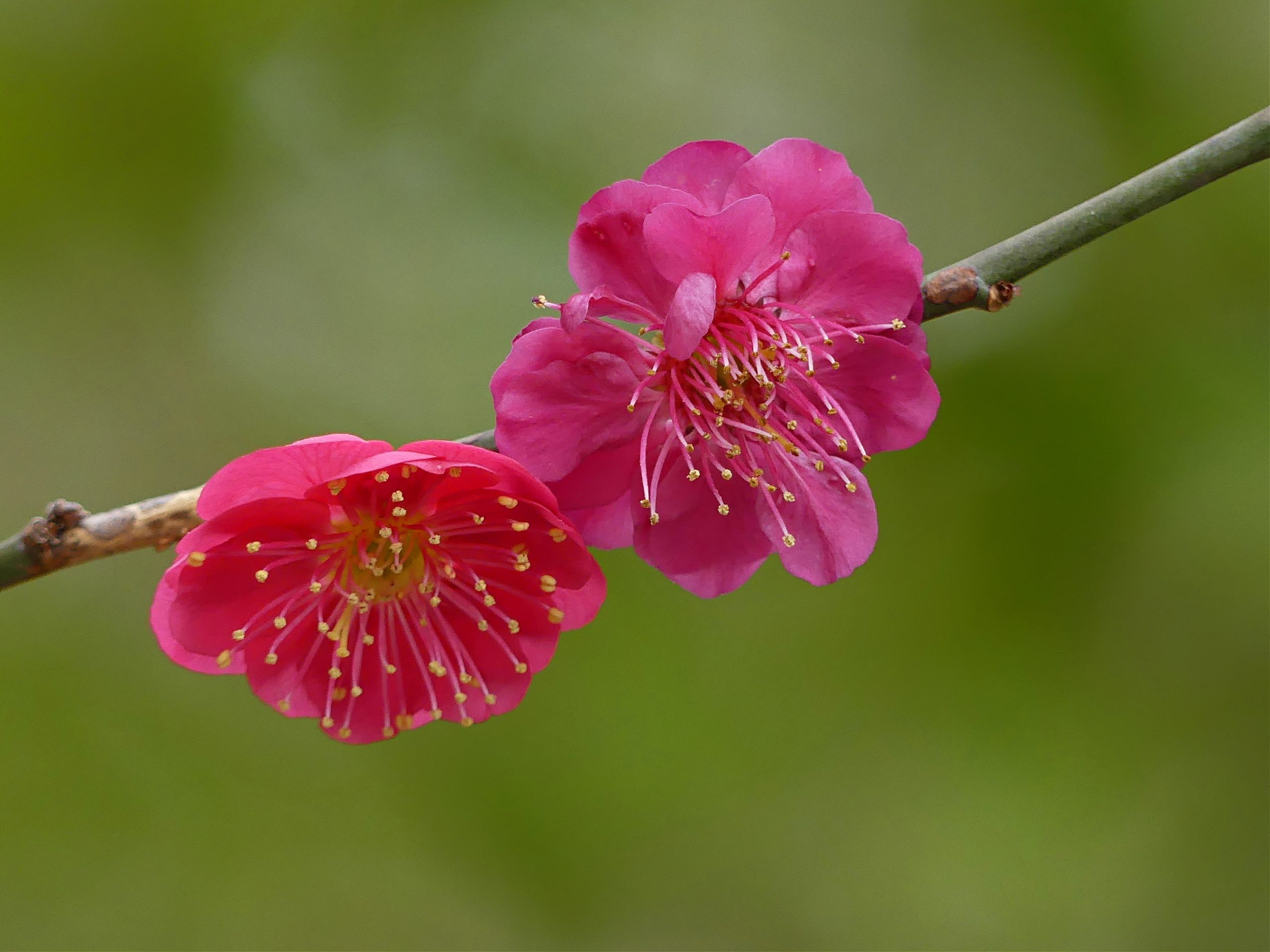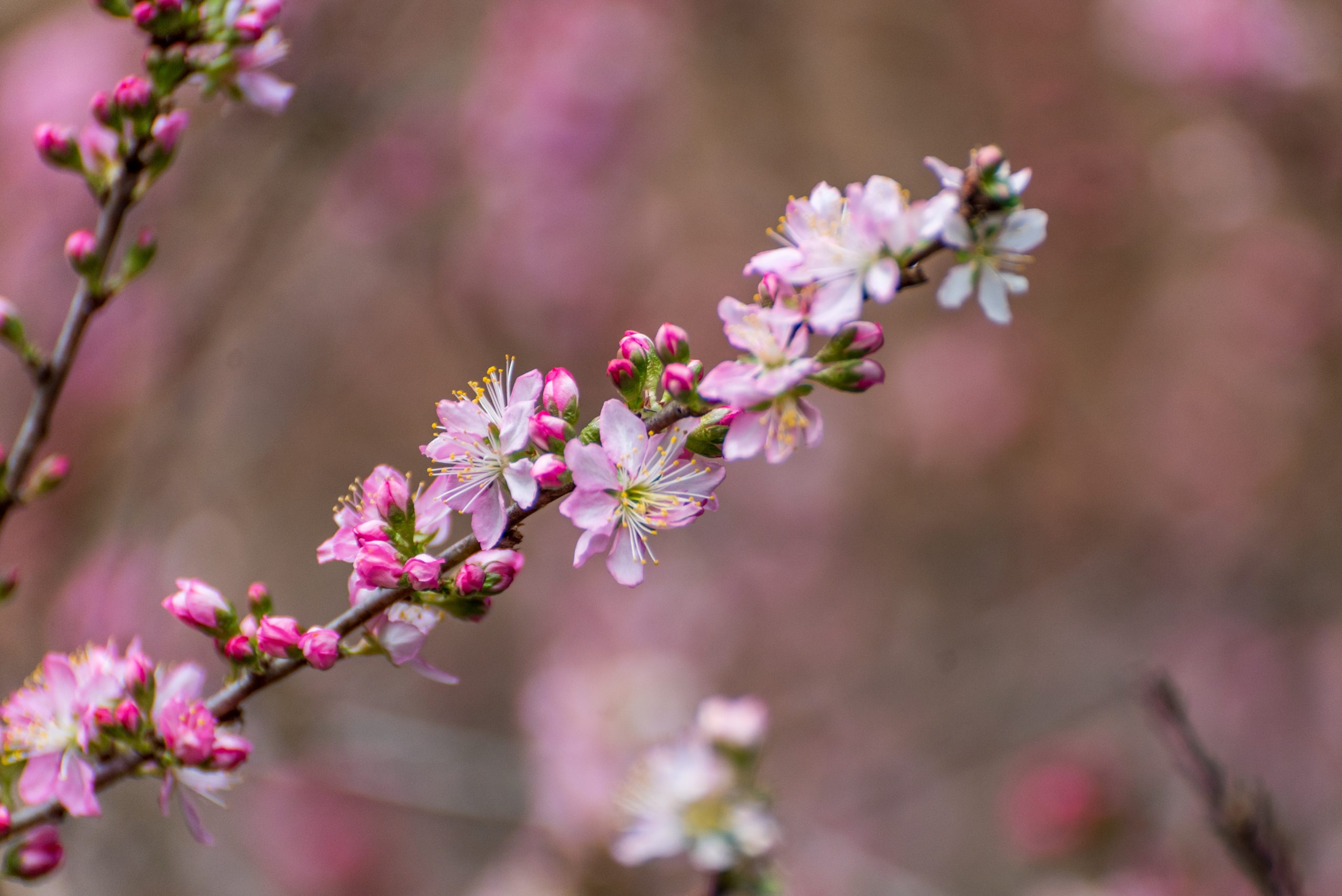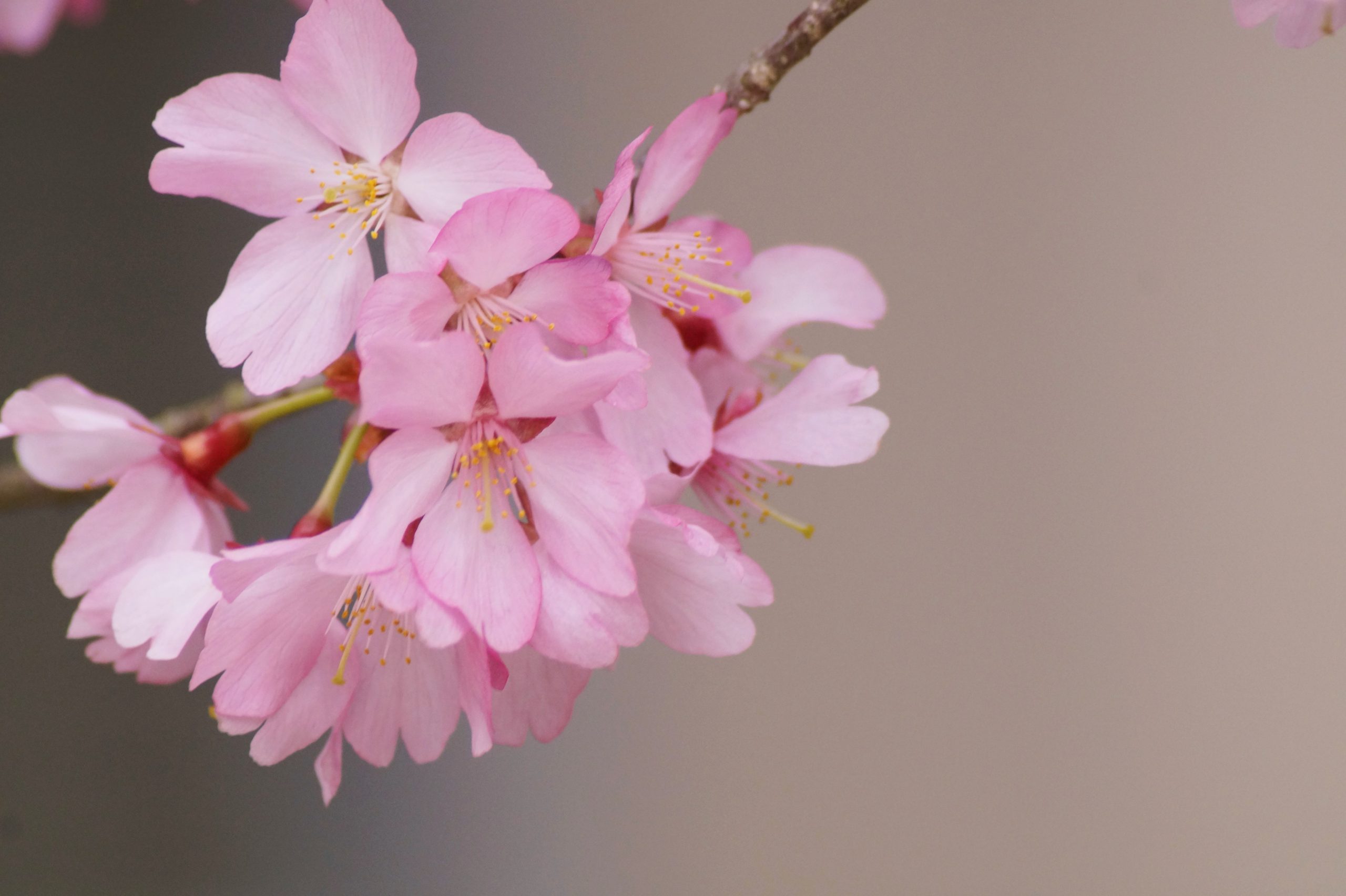Ornamental cherries belong to the genus Prunus, an incredibly diverse group represented by many different plants throughout Duke Gardens.
Many Prunus species closely resemble cherries and may bloom at or around the same time depending on the weather. Below is a simple field guide to help you distinguish ornamental cherries from any of their close relatives you might observe during your visit.

A double hybrid ‘Matsubara Red’ flowering plum, by Ira Tucker.
Flowering plums (Prunus mume) have rounded petals, with one flower at each bud that blooms close to the branch. However, because these buds tend to cluster together, especially at the branch tips, it can sometimes appear as if they are all connected from the same point.
Also known as flowering apricots, the number of petals varies depending on the cultivar, along with color, which ranges from light pink to deep red. Look for them throughout the Culberson Asiatic Arboretum and the Historic Gardens.
Peaches (Prunus persica) are best known for their tasty fruits, and you’ll find several cultivars in the Charlotte Brody Discovery Garden’s orchard. However, there are other selections, like the ‘Crimson Cascade’ weeping peach near the main entrance to the Culberson Asiatic Arboretum, which are grown as ornamentals with double, semi-double or multi-colored flowers.
Depending on the cultivar, peach blossoms may be solitary or come in pairs with each flower dangling from a very short peduncles, or flower stalks. The petal tips are also pointier, making them appear more star-shaped.

‘Crimson Cascade’ weeping peach, by Jessica Voss

Himalayan bush cherry, by Cathi Bodine.
Flowering almond (Prunus jacquemontii) is a shrubby upright perennial also known as Himalayan bush cherry, but while its beauty is unquestionable, it’s usually not what most people mean when they think of ornamental cherries.
These flowers cluster in groups of two to three close to the branches, with pink and white petals. Look for it in both the Historic Gardens and the Culberson Asiatic Arboretum.
Unlike the other species covered on this page, ornamental cherries (subgenus Cerasus) aren’t a single species but an umbrella term for a number of different species, cultivars, and hybrids which are grown for their flowers. However, this group is easy to distinguish from other kinds of Prunus, as the flowers dangle from long peduncles and bloom in clusters that emerge from a single point on a branch—sometimes, a bud may even emerge directly from the main trunk.
While the number of petals may vary, the tips of each petal are distinctively notched, and they can be pink, white, or some shade in between depending on the cultivar and the age of the flower.
Learn more about different kinds of ornamental cherries in Duke Gardens and where to find them in our virtual Cherry Blossom Experience tour.

‘First Lady’ hybrid flowering cherry, by William Hanley.
Questions about cherry blossoms?
Please contact us at gardens@duke.edu.
